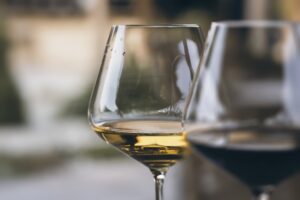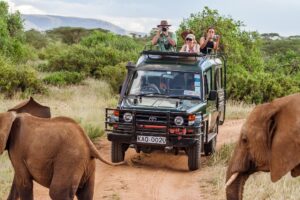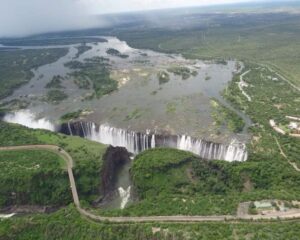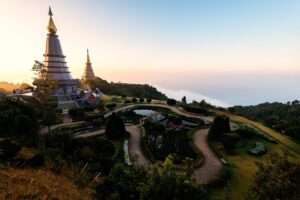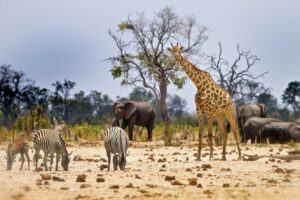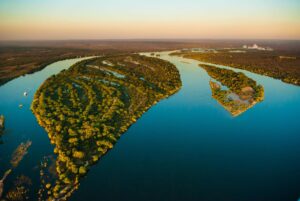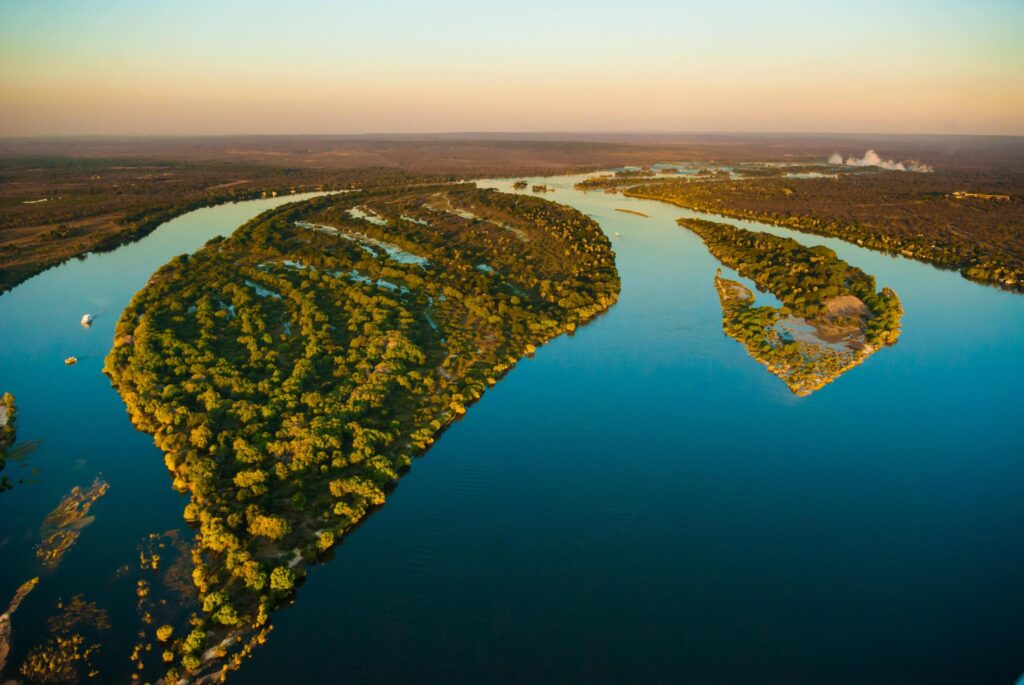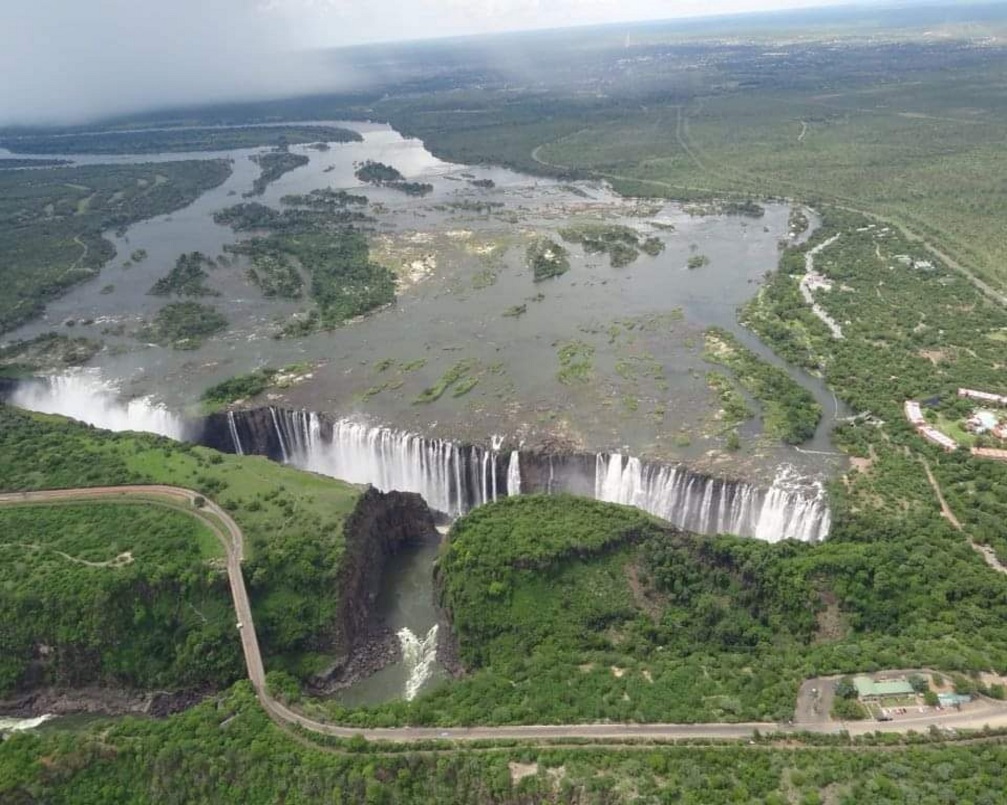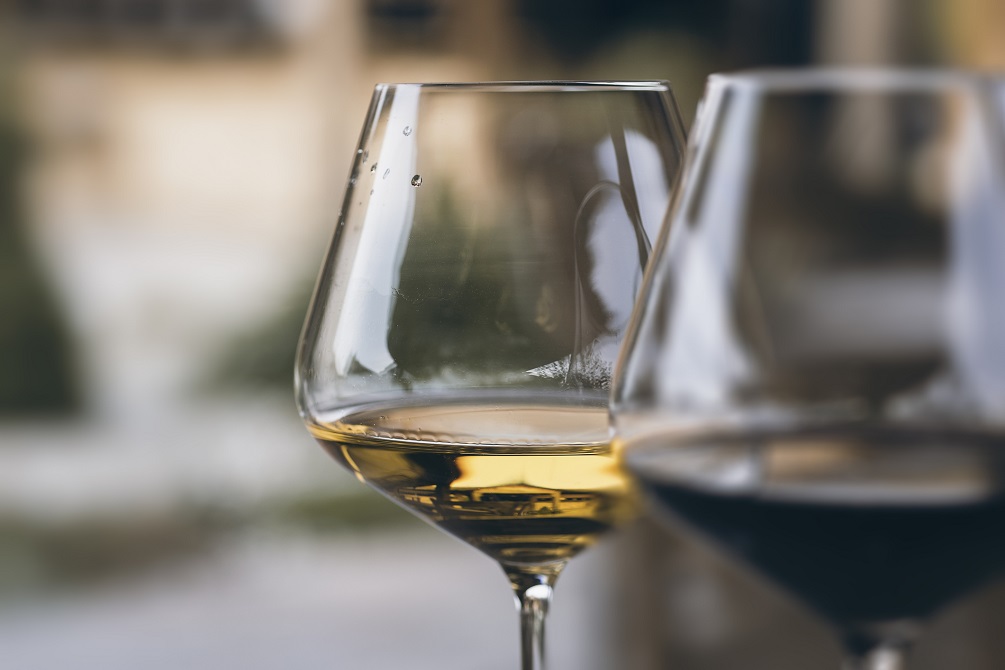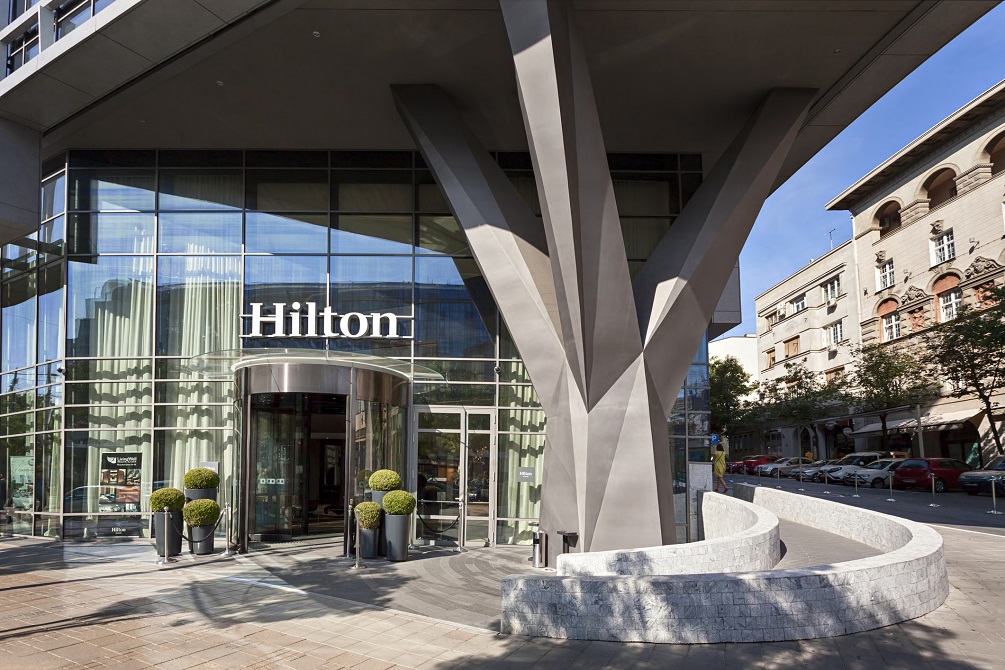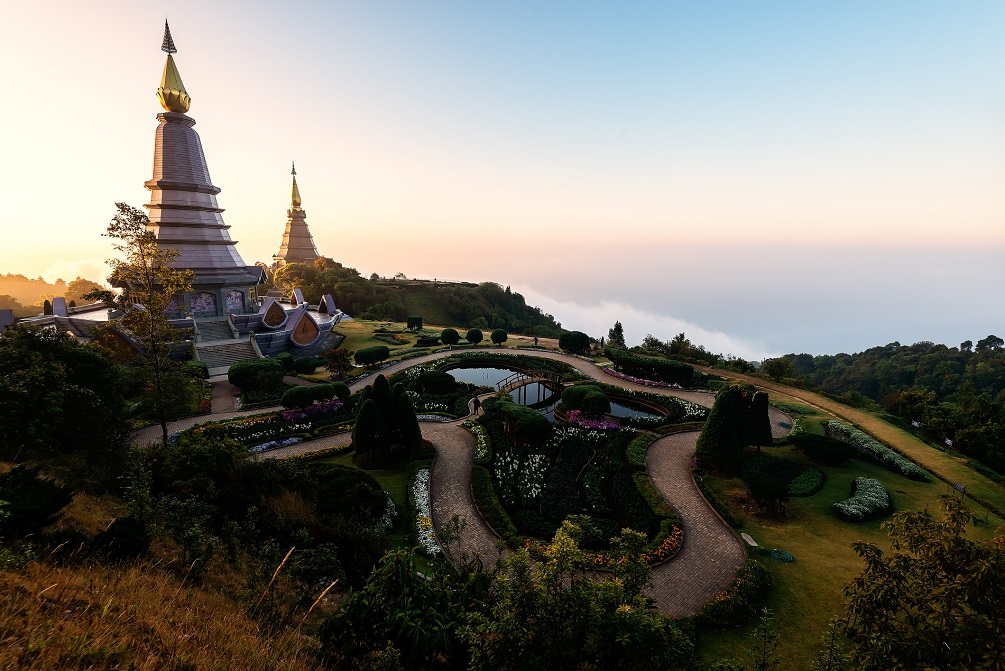Botswana
Botswana is the ideal country to experience Africa in its most natural form while cruising on the world's largest inland river delta or observing lions roam vast grasslands on a safari.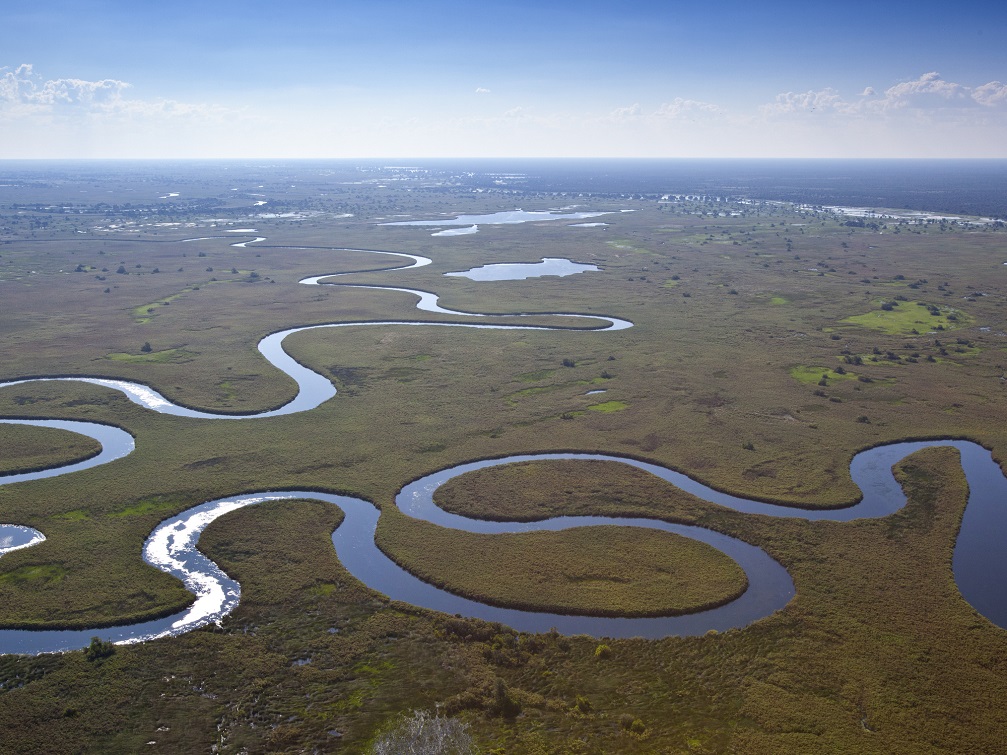
The Okavango Delta and the Makgadikgadi Pan hold records as the world’s largest inland river delta and salt pan. They offer spectacular, photo-worthy views that are the highlight of a Botswana holiday for most visitors.
A Botswana safari is renowned for offering one of the most authentic African safari experiences. A healthy wildlife population lives comfortably within the country’s borders as a result of Botswana’s conservation efforts. Many endangered species like the Black Rhino remain protected and possible to sight during a safari in Botswana.
A holiday to Botswana is not only an opportunity to see wildlife basking in the freedom of the unbounded wilderness, it’s also a chance to embrace nature in its most natural form. Whether you want to see the African elephant in its natural habitat, observe the seasonal migration of over a hundred bird species or participate in the Barbel run festivities, a tour across Botswana offers it all.
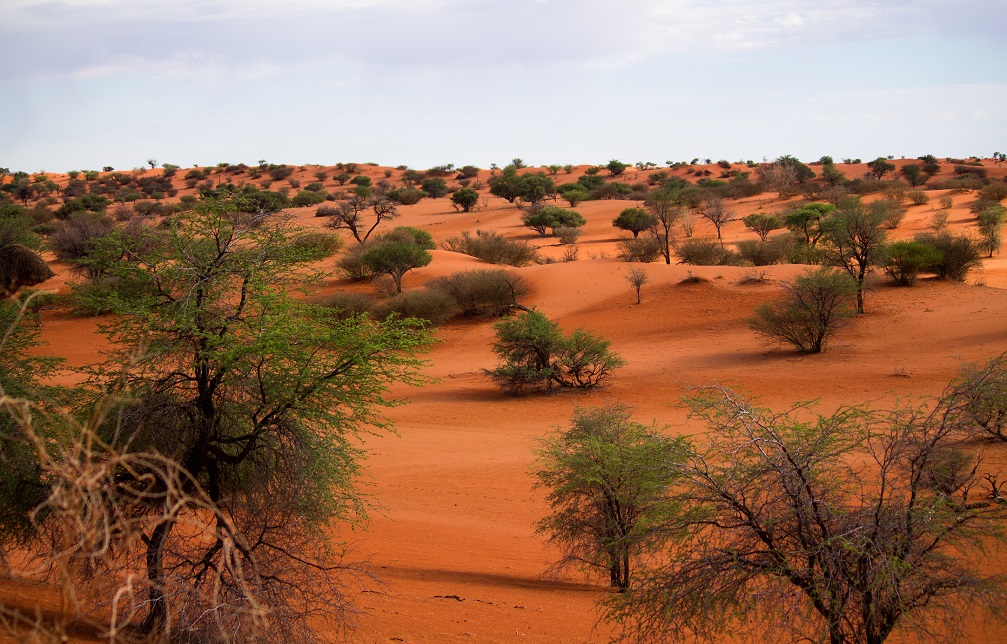


Botswana is located in the center of Southern Africa. South Africa is its neighbor in the south and southeast; Namibia in the west and north; and Zambia and Zimbabwe in the northeast. Botswana lies partly within the Tropics—the Tropic of Capricorn runs just south of the town of Mahalapye. But it does have a landscape typical of most countries in Southern Africa.
Most people will fly into Botswana via South Africa as the destination is often incorporated into a wider southern Africa tour. Flights to Botswana are also available via Doha on Qatar Airways or via Addis Ababa on Ethiopian Airlines.
Three geographical regions make up Botswana.
- The hardveld in eastern Botswana is the first, which consists of rocky hill ranges.
- The second is the sandveld region of the Kalahari (or Kgalagadi in Setswana) Desert, which makes up 84% of Botswana’s terrain and is where the majority of the population resides. The Kalahari Desert extends through South Africa, Angola, and Namibia as well.
- The desert is mostly acacia thorn bushes and shrubs, trees and grassland; the flat landscape features valleys, pans (which are a vital resource for wildlife during the rainy season), sand dunes, and isolated hills in the northwest.
The third is in the lowest part of the Kalahari Basin that consists of ancient lakebeds.
When you travel to Botswana you will be forgiven for thinking that it is a very dry country. The reality is quite the opposite. The country has a generous portion of natural water sources, from the Chobe River that runs along part of the northern border to the Okavango River that flows in from the highlands of Angola, soaking in the river basin and forming water channels, swamps, lagoons, and islands.
The Okavango Delta is the largest inland delta in the world. Southeast of the Okavango lies one of the world’s greatest salt pans: the Makgadikgadi Pan.
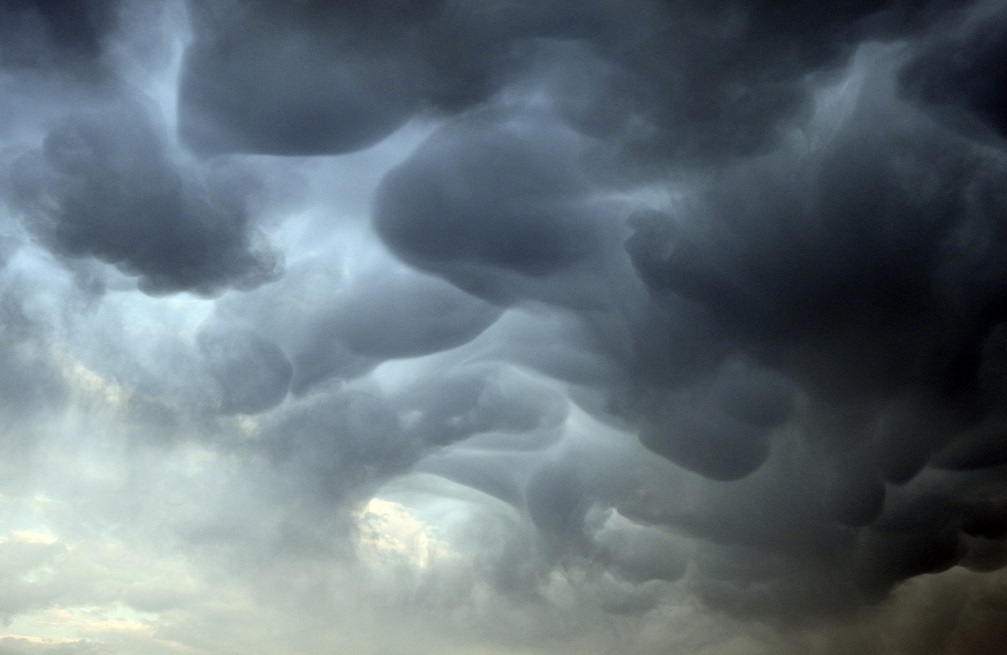


Climate and weather
Botswana’s climate varies throughout the year: during a winter holiday in Botswana, you will experience a semi-arid climate. During a summer Botswana tour, humid subtropical weather presides with drier periods.
Winter (Dry season: May through to October)
Winter is the high season for travel to Botswana. It’s characterized by an uncrowded atmosphere (except for Chobe, the lively riverfront area) and a ton of activities.
A Botswana safari in the renowned Okavango Delta and Chobe National Park is best during this season.
After the summer rains, wildlife gathers around the natural waterholes and the borehole-fed dames of the different game reserves in the country. Wildlife is easier to spot so you may get the chance to see lions and leopards.
What’s more, the weather is almost perfect at this time of the year. Temperatures are mild. Rain is rare. And there are fewer mosquitoes.
Summer (Wet season: November to April)
The rainy season in Botswana begins in this period. The rain (or Pula, in Setwsana, which is also the name of Botswana’s currency) can be unpredictable, regional, and continuous for days, especially in January and February.
It wouldn’t be an African summer without unbearable heat so bear in mind that from early October to late November it can be very hot.
Some lodges and camps close down for the season because it can be harder to see wildlife. Although wildlife visibility decreases, there is still a chance that you will see some.
The summer rains create the opportunity for two other Botswana holiday activities: bird watching and fishing.
For all the bird watchers out there, here’s an interesting fact: Botswana has over 460 species of birdlife. During summer, the lush greenery of the land, transformed by the rainfall, invites migratory birds back to the country.
As for fishing enthusiasts, the Barbel run is typically between August and October in the Okavango.
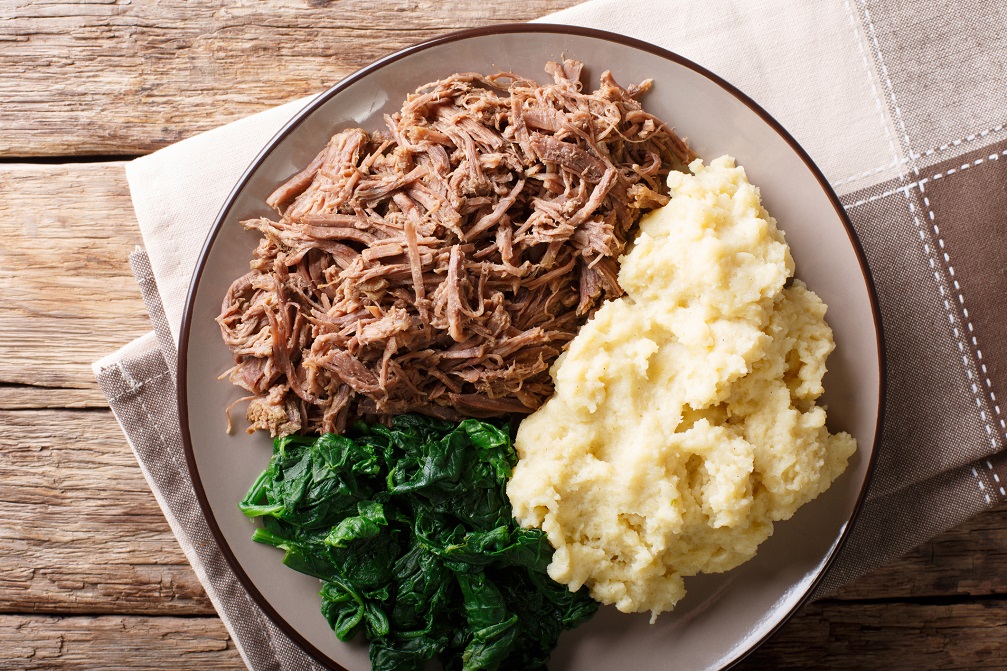


If you crave an authentic culinary experience during your stay in Botswana then prepare yourself for earthy flavors and basic seasonings, a characteristic of most Southern African cuisines.
In fact, some of the meals enjoyed in other Southern African countries are popular in Botswana such as pap, samp, and mopane worms (a seasonal delicacy that’s high in protein).
Seswaa, mashed-up salted beef, is a treasured meal of the Batswana, while staple foods in and around Okavango consist of maize porridge (papa) and boiled cod.
Most safari camps and lodges fuse international food with Batswana staples and game meat to produce delicious dishes. There are also plenty of options for vegans and vegetarians in the capital city of Gaborone.
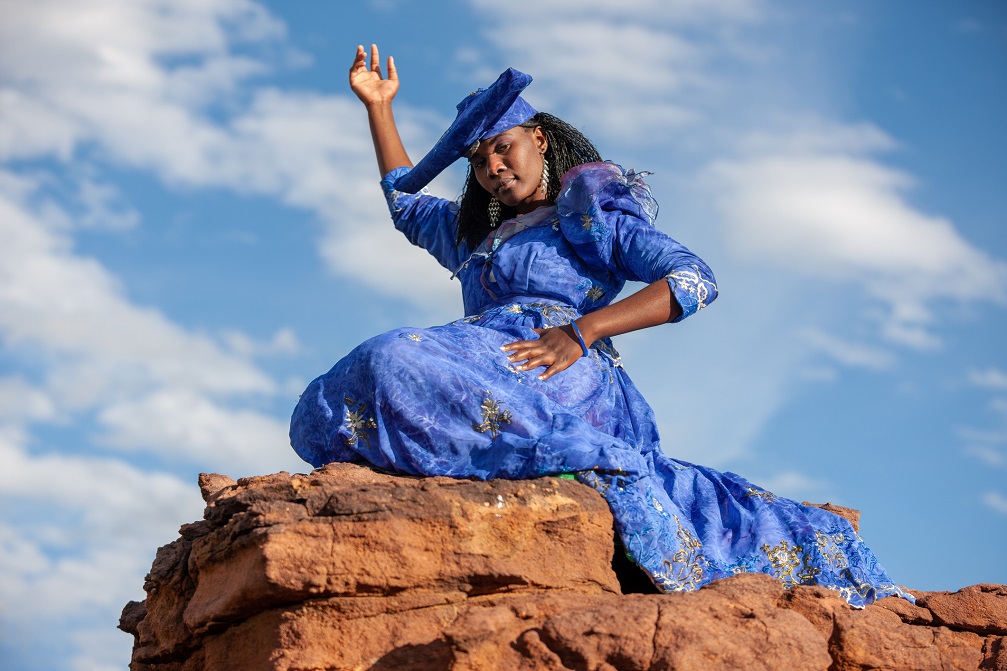


There aren’t any specific restrictions on what you can wear during a tour across Botswana as all Batswana in urban towns opt for a modern dress. The key to being comfortable in Botswana is opting for casual attire and dressing down rather than overdoing it.
If you are traveling to Botswana in the dry season (winter), in the daytime it’s warm and at night it’s cold. You should pack for two seasons essentially: a combination of warm and loose-fitting lightweight clothing.
If you are visiting Botswana during the wet season (summer), it’s hot and rainy. You will need breathable clothing and a lightweight raincoat.
For every trip, regardless of what time of year you choose to travel to Botswana, neutral-colored garments that blend in with the bush are ideal for game viewing and safaris. Comfortable closed walking shoes or gym shoes are necessary. A wide-brimmed hat is an item you shouldn’t forget either. The African sun is not to be underestimated.
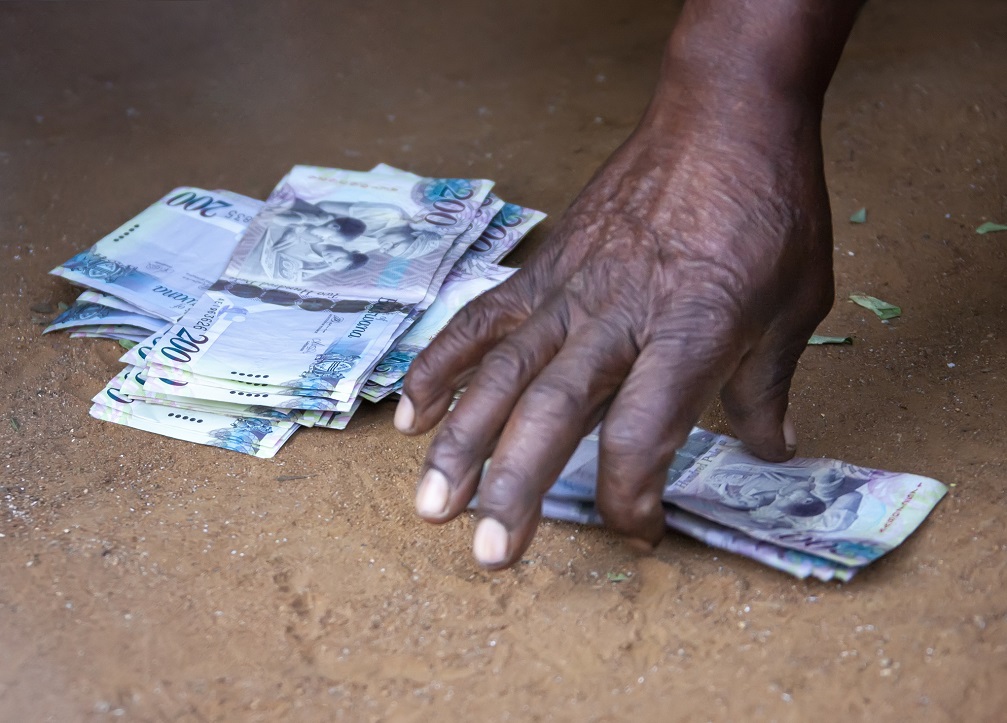


The currency of Botswana is Pula (BWP). One Pula is divided into 100 thebe (meaning ‘shield’ in Setswana and represents defense).
Banknotes come in denominations of 10, 20, 50, 100, and 200 Pula and coins in denominations of 5, 10, 25, 50 thebe and 1, 2, 5 Pula.
Foreign currency and traveler’s cheques can be exchanged at banks, authorized hotels, and bureau de change. The British Pound is one of the most easily convertible currencies.
ATMs accept international visa cards but are most common in larger towns and cities. If you want to buy crafts, community art, or access cultural sites, you can usually only pay in cash.
The main language spoken by Batswana is English. It’s widely used in all urban centers and by tour guides and staff of camps, lodges, and hotels.
Those living in rural areas will be able to converse in English as well, especially the younger population.
The home language and lingua franca of Botswana are Setswana (or Tswana). Shona, Ndebele, Herero, and Afrikaans—of the European family—are some of the other twenty dialects spoken in the country.
Some useful phrases in Setswana:
- Hallo – Hallo
- Good morning/afternoon/evening – Dumela (to one person) or Dumelang (to a group)
- Do you speak English? – O bua Sekhowa?
- Excuse me – Ntshwarele
- Please – Ka kopo
- Thank you – Ke a leboga
- How much does it cost? – Ke bokae?
- Yes – Ea
- No – Aua
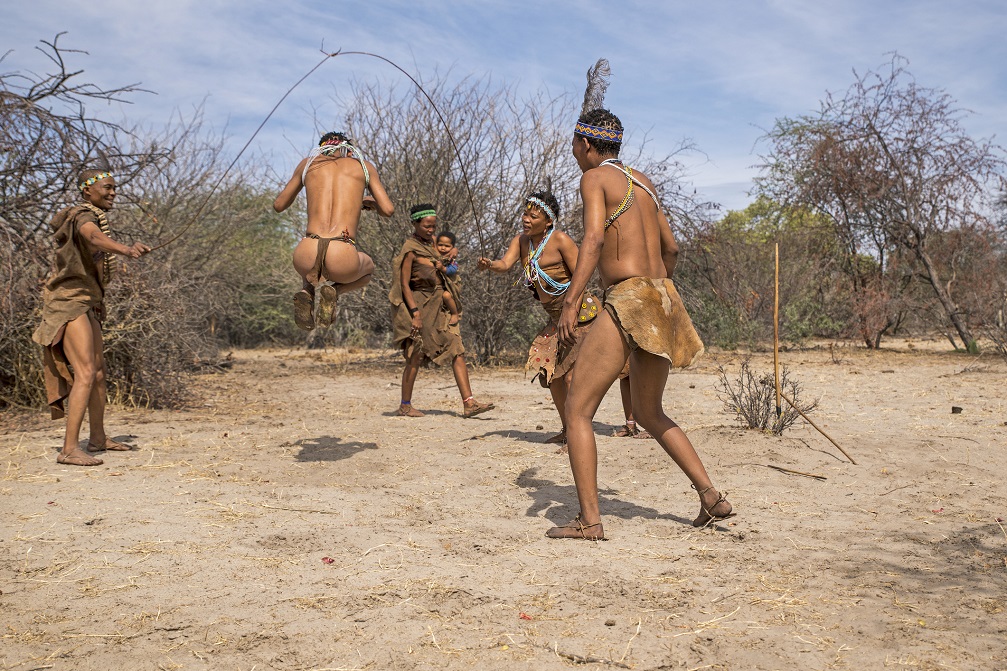


There are three main tribes in Botswana, of which Batswana make up almost eighty percent. Each tribe has its own unique way of life, legends, rituals, traditions, and values.
Batswana traditions persist until this day in rural areas of the country, where the differences between the tribes are evident, especially when it comes to marriage rites and ceremonies.
In urban areas, western culture bears great influence in the dress, media, tourism, consumer goods, technology, and business in Botswana. There is a sense of unity in how this imported culture blends with the inherent cultures of the country.
However, it is rare to see the physical aspects of these cultures, such as traditional dress and arts and crafts in a typical Botswana itinerary.
Music and dance have been the way Batswana has preserved their culture as western ideals invaded the country. So much so that everywhere you go in Botswana, the traditional and modern music of different southern African and sub-Saharan African groups can be heard.
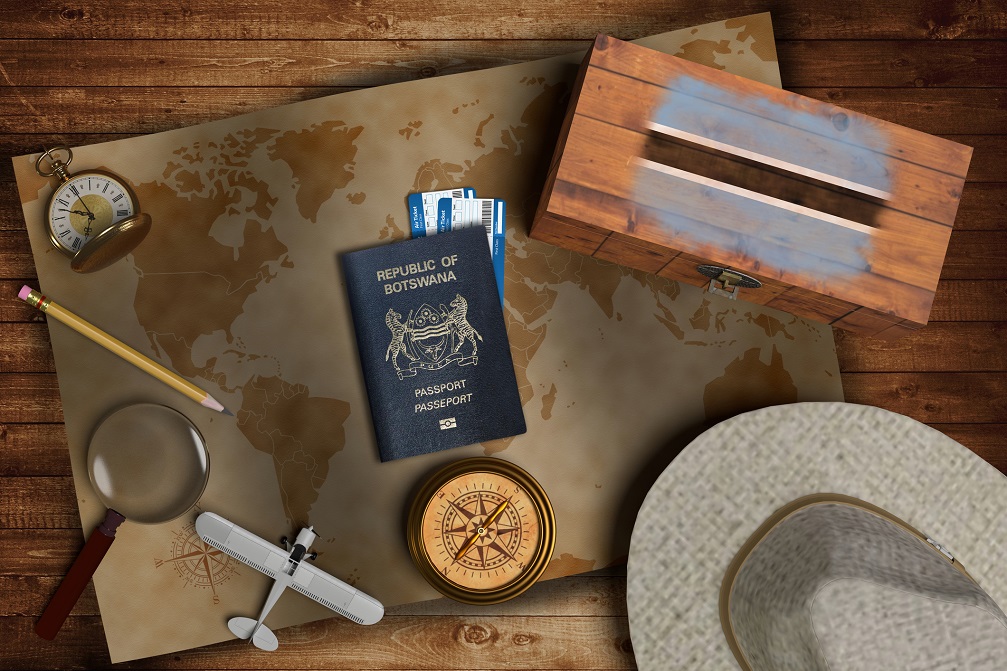


A visa is usually not required for British nationals to enter Botswana for stays of up to 90 days. Your passport should have a validity of a minimum of 6 months from the date of entry into Botswana.
Overstaying your visa can cause delays on departure.
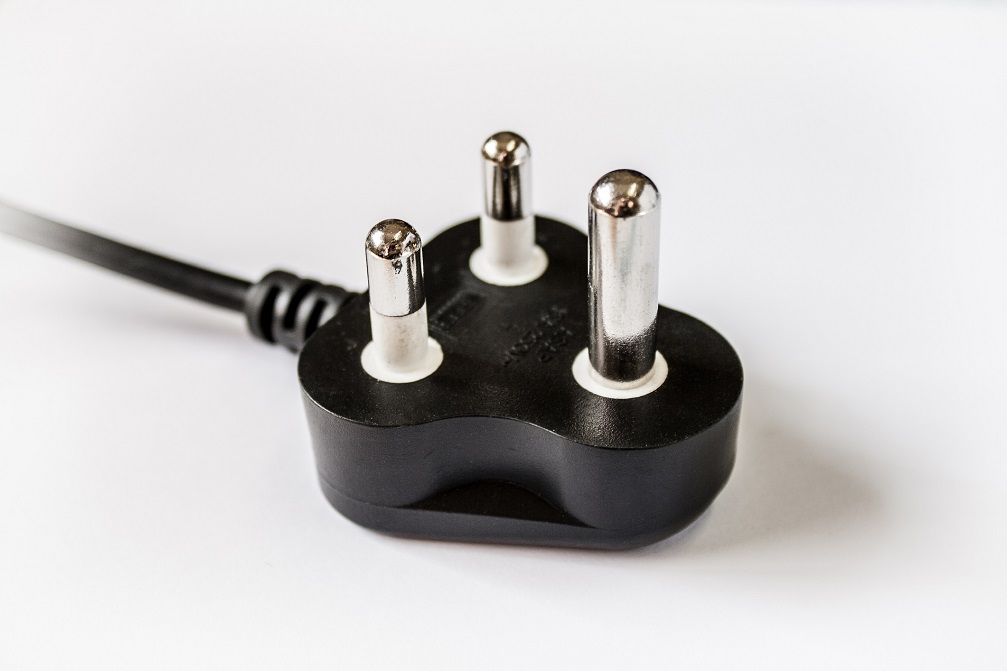


Botswana uses the same type of Type G plug (3 rectangular prongs in a triangle) as in the UK. They also use type M (three round prongs in a triangle) and type D (type M but larger pins).
In case Type G is unavailable, bring along a universal adapter that has surge protection. A step-down converter for hairdryers and hot tools can also come in handy.
The standard voltage in Botswana is 230V and the standard frequency is 50Hz.



The Okavango Delta and the Makgadikgadi Pan hold records as the world’s largest inland river delta and salt pan. They offer spectacular, photo-worthy views that are the highlight of a Botswana holiday for most visitors.
A Botswana safari is renowned for offering one of the most authentic African safari experiences. A healthy wildlife population lives comfortably within the country’s borders as a result of Botswana’s conservation efforts. Many endangered species like the Black Rhino remain protected and possible to sight during a safari in Botswana.
A holiday to Botswana is not only an opportunity to see wildlife basking in the freedom of the unbounded wilderness, it’s also a chance to embrace nature in its most natural form. Whether you want to see the African elephant in its natural habitat, observe the seasonal migration of over a hundred bird species or participate in the Barbel run festivities, a tour across Botswana offers it all.



Botswana is located in the center of Southern Africa. South Africa is its neighbor in the south and southeast; Namibia in the west and north; and Zambia and Zimbabwe in the northeast. Botswana lies partly within the Tropics—the Tropic of Capricorn runs just south of the town of Mahalapye. But it does have a landscape typical of most countries in Southern Africa.
Most people will fly into Botswana via South Africa as the destination is often incorporated into a wider southern Africa tour. Flights to Botswana are also available via Doha on Qatar Airways or via Addis Ababa on Ethiopian Airlines.
Three geographical regions make up Botswana.
- The hardveld in eastern Botswana is the first, which consists of rocky hill ranges.
- The second is the sandveld region of the Kalahari (or Kgalagadi in Setswana) Desert, which makes up 84% of Botswana’s terrain and is where the majority of the population resides. The Kalahari Desert extends through South Africa, Angola, and Namibia as well.
- The desert is mostly acacia thorn bushes and shrubs, trees and grassland; the flat landscape features valleys, pans (which are a vital resource for wildlife during the rainy season), sand dunes, and isolated hills in the northwest.
The third is in the lowest part of the Kalahari Basin that consists of ancient lakebeds.
When you travel to Botswana you will be forgiven for thinking that it is a very dry country. The reality is quite the opposite. The country has a generous portion of natural water sources, from the Chobe River that runs along part of the northern border to the Okavango River that flows in from the highlands of Angola, soaking in the river basin and forming water channels, swamps, lagoons, and islands.
The Okavango Delta is the largest inland delta in the world. Southeast of the Okavango lies one of the world’s greatest salt pans: the Makgadikgadi Pan.



Climate and weather
Botswana’s climate varies throughout the year: during a winter holiday in Botswana, you will experience a semi-arid climate. During a summer Botswana tour, humid subtropical weather presides with drier periods.
Winter (Dry season: May through to October)
Winter is the high season for travel to Botswana. It’s characterized by an uncrowded atmosphere (except for Chobe, the lively riverfront area) and a ton of activities.
A Botswana safari in the renowned Okavango Delta and Chobe National Park is best during this season.
After the summer rains, wildlife gathers around the natural waterholes and the borehole-fed dames of the different game reserves in the country. Wildlife is easier to spot so you may get the chance to see lions and leopards.
What’s more, the weather is almost perfect at this time of the year. Temperatures are mild. Rain is rare. And there are fewer mosquitoes.
Summer (Wet season: November to April)
The rainy season in Botswana begins in this period. The rain (or Pula, in Setwsana, which is also the name of Botswana’s currency) can be unpredictable, regional, and continuous for days, especially in January and February.
It wouldn’t be an African summer without unbearable heat so bear in mind that from early October to late November it can be very hot.
Some lodges and camps close down for the season because it can be harder to see wildlife. Although wildlife visibility decreases, there is still a chance that you will see some.
The summer rains create the opportunity for two other Botswana holiday activities: bird watching and fishing.
For all the bird watchers out there, here’s an interesting fact: Botswana has over 460 species of birdlife. During summer, the lush greenery of the land, transformed by the rainfall, invites migratory birds back to the country.
As for fishing enthusiasts, the Barbel run is typically between August and October in the Okavango.



If you crave an authentic culinary experience during your stay in Botswana then prepare yourself for earthy flavors and basic seasonings, a characteristic of most Southern African cuisines.
In fact, some of the meals enjoyed in other Southern African countries are popular in Botswana such as pap, samp, and mopane worms (a seasonal delicacy that’s high in protein).
Seswaa, mashed-up salted beef, is a treasured meal of the Batswana, while staple foods in and around Okavango consist of maize porridge (papa) and boiled cod.
Most safari camps and lodges fuse international food with Batswana staples and game meat to produce delicious dishes. There are also plenty of options for vegans and vegetarians in the capital city of Gaborone.



There aren’t any specific restrictions on what you can wear during a tour across Botswana as all Batswana in urban towns opt for a modern dress. The key to being comfortable in Botswana is opting for casual attire and dressing down rather than overdoing it.
If you are traveling to Botswana in the dry season (winter), in the daytime it’s warm and at night it’s cold. You should pack for two seasons essentially: a combination of warm and loose-fitting lightweight clothing.
If you are visiting Botswana during the wet season (summer), it’s hot and rainy. You will need breathable clothing and a lightweight raincoat.
For every trip, regardless of what time of year you choose to travel to Botswana, neutral-colored garments that blend in with the bush are ideal for game viewing and safaris. Comfortable closed walking shoes or gym shoes are necessary. A wide-brimmed hat is an item you shouldn’t forget either. The African sun is not to be underestimated.



The currency of Botswana is Pula (BWP). One Pula is divided into 100 thebe (meaning ‘shield’ in Setswana and represents defense).
Banknotes come in denominations of 10, 20, 50, 100, and 200 Pula and coins in denominations of 5, 10, 25, 50 thebe and 1, 2, 5 Pula.
Foreign currency and traveler’s cheques can be exchanged at banks, authorized hotels, and bureau de change. The British Pound is one of the most easily convertible currencies.
ATMs accept international visa cards but are most common in larger towns and cities. If you want to buy crafts, community art, or access cultural sites, you can usually only pay in cash.
The main language spoken by Batswana is English. It’s widely used in all urban centers and by tour guides and staff of camps, lodges, and hotels.
Those living in rural areas will be able to converse in English as well, especially the younger population.
The home language and lingua franca of Botswana are Setswana (or Tswana). Shona, Ndebele, Herero, and Afrikaans—of the European family—are some of the other twenty dialects spoken in the country.
Some useful phrases in Setswana:
- Hallo – Hallo
- Good morning/afternoon/evening – Dumela (to one person) or Dumelang (to a group)
- Do you speak English? – O bua Sekhowa?
- Excuse me – Ntshwarele
- Please – Ka kopo
- Thank you – Ke a leboga
- How much does it cost? – Ke bokae?
- Yes – Ea
- No – Aua



There are three main tribes in Botswana, of which Batswana make up almost eighty percent. Each tribe has its own unique way of life, legends, rituals, traditions, and values.
Batswana traditions persist until this day in rural areas of the country, where the differences between the tribes are evident, especially when it comes to marriage rites and ceremonies.
In urban areas, western culture bears great influence in the dress, media, tourism, consumer goods, technology, and business in Botswana. There is a sense of unity in how this imported culture blends with the inherent cultures of the country.
However, it is rare to see the physical aspects of these cultures, such as traditional dress and arts and crafts in a typical Botswana itinerary.
Music and dance have been the way Batswana has preserved their culture as western ideals invaded the country. So much so that everywhere you go in Botswana, the traditional and modern music of different southern African and sub-Saharan African groups can be heard.



A visa is usually not required for British nationals to enter Botswana for stays of up to 90 days. Your passport should have a validity of a minimum of 6 months from the date of entry into Botswana.
Overstaying your visa can cause delays on departure.



Botswana uses the same type of Type G plug (3 rectangular prongs in a triangle) as in the UK. They also use type M (three round prongs in a triangle) and type D (type M but larger pins).
In case Type G is unavailable, bring along a universal adapter that has surge protection. A step-down converter for hairdryers and hot tools can also come in handy.
The standard voltage in Botswana is 230V and the standard frequency is 50Hz.
Travel related news, information and inspirational articles and videos for travellers booking flights or holidays to Botswana. Ask questions about travel in Botswana and get answers from Botswana experts
NEWS
Inspiration, Information and Travel Guides
MEET THE Botswana EXPERTS
If you are looking to book a holiday to Botswana or needs some help and advice planning travel to Botswana then contact one of the UK based independent travel agents that specialise in Botswana itineraries.
FEATURED VIDEOS
Your Travel Questions Answered
Ask any travel related question and get an answer from one of our experts that will provide you with an answer from their personal experience
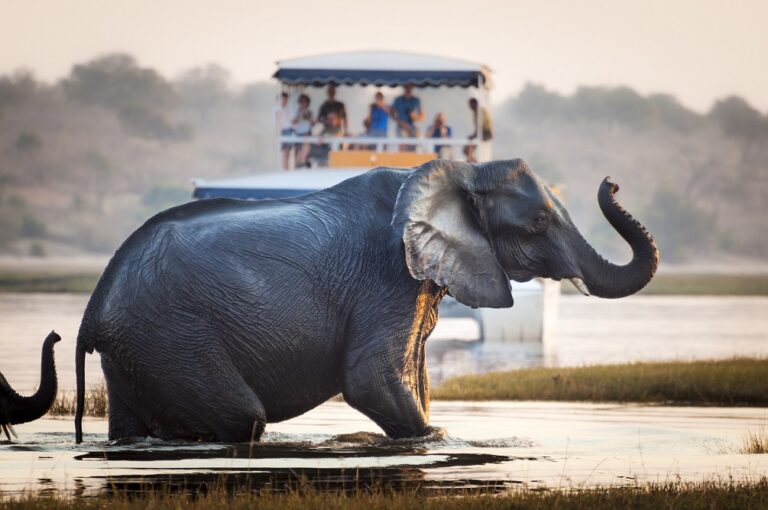

I’ve never been on a Safari before – they look amazing on the telly. Are they safe?

